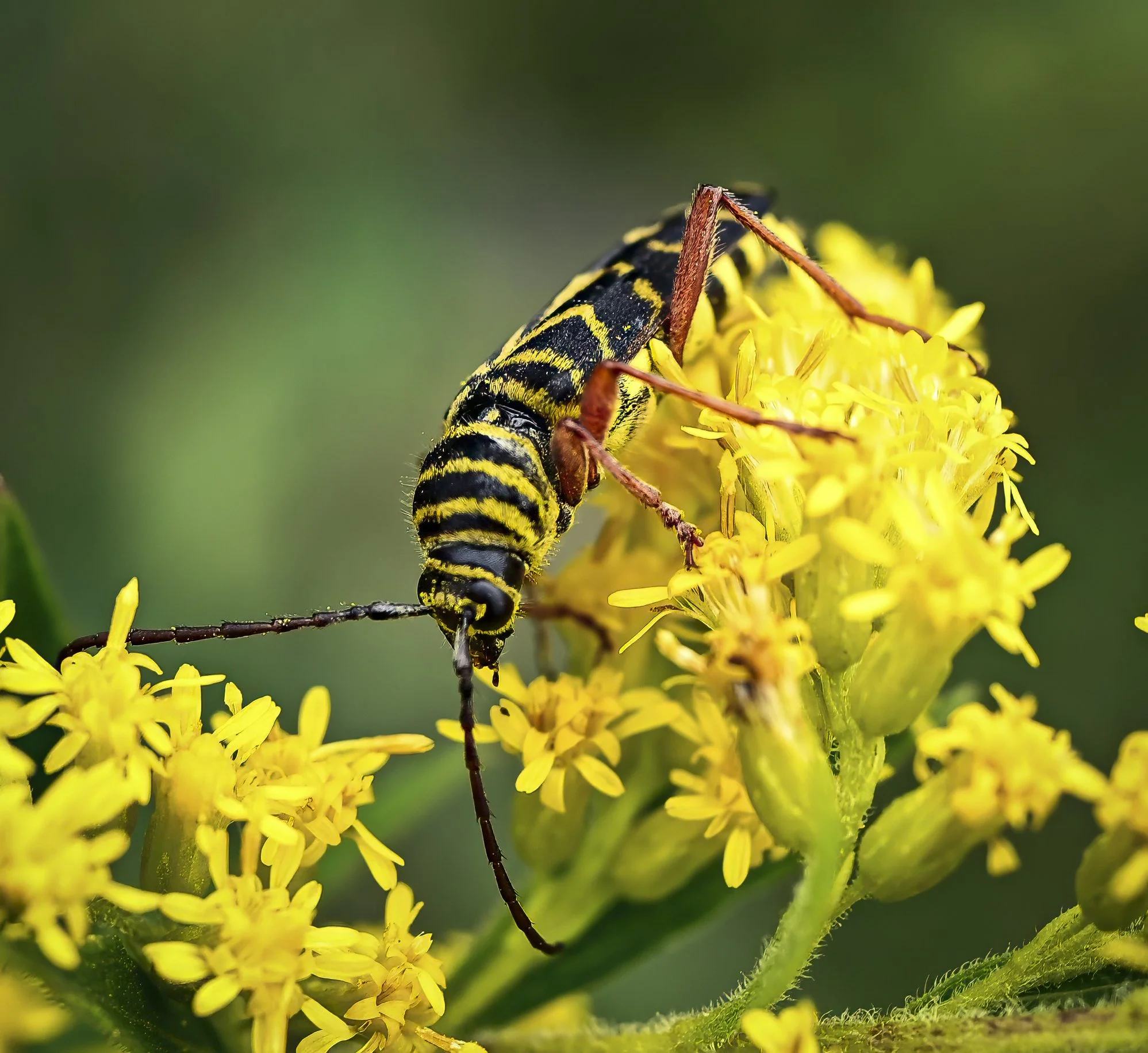Giant Goldenrod
Giant goldenrod is a perennial that can grow almost 6 feet tall! It has a central stem which then breaks off into branches, each bearing its own golden flowers, sometimes called sprays.
These flowers bloom in late summer into early fall—August, September, and October being typical blooming months. In addition to its beauty, goldenrod is highly beneficial to the environment. Because of the large amount of nectar and pollen it produces, “it supports bees, wasps, butterflies, moths, and beetles…. it produces high-quality pollen, rich in fats and minerals, making it helpful for migratory insects such as the monarch butterfly (Denise D’Aurora, Master Gardener, Crawford County, Penn State Extension website extension.psu.edu).”
Another benefit of goldenrod is that it can be used to “prevent soil erosion, stabilizing slopes and controlling erosion along stream banks… well-adapted to …conditions…. ranging from dry sand soils to moist clayey ones (content.gardenforwildlife.com).”
While shining in her beauty, goldenrod is also laboring on behalf of creation to support an ecosystem where life can thrive and blossom. The botanical name of Goldenrod is solidago. Solidago is Latin for solidus, meaning “to make whole.” This reference is to “the plant's healing and medicinal properties. Goldenrod has been used to heal wounds of the skin, and to treat inflammation of the mouth and throat as well as tuberculosis, diabetes, and arthritis (Penn State Extension website extension.psu.edu.)”
Goldenrod is the state flower of Kentucky and of Nebraska. In the Northeast, it is one of our wildflowers and you can see it growing along highways or in meadows.
What do you love about this particular creature?
What do they reveal to you about God and our faith?
Mary Oliver has written about this bright, blooming wildflower in her poem “Goldenrod”: "I was just minding my own business/when I found myself on their straw hillsides,/citron and butter-colored, and was happy, and why not?"
In Mary Oliver‘s beautiful poem, we can feel the power in the beauty of this amazing perennial. By just gazing upon the goldenrod filling the hillside, Mary Oliver claims happiness and invites us to ask, "Why not?"
Our landscape today is filled with polarizing conversations and challenging news. So much of what we are learning and hearing calls us to lean into a posture of mercy and justice, all the while feeling overwhelmed. Mary Oliver's reflection reminds me to breathe, to pause, and to take in the natural beauty that is this fragile earth, our island home. Goldenrod is everywhere in New England - we have many opportunities to stop and contemplate their "citron and butter-colored flowers.”
With this pause and this reflection, I feel empowered to continue the holy work God is calling us to be about. Taking in the beauty of the goldenrod, and remembering to breathe, I partner with goldenrod to be about creating a global ecosystem where life can thrive and blossom, where justice and mercy create the balance and healing this fragile earth is longing to embrace.
Author - The Rt. Rev. Laura Ahrens
Bishop Laura Ahrens lives in Connecticut, and she loves walking with people as they explore their relationship with the Lord and how they are called to share God’s love.
O God, having shown us how far your love goes in saving the lost and forgotten, mercifully grant that we might join you in the work of reuniting with all creatures; through Jesus Christ the Wisdom of Creation, who lives and reigns with you and the Holy Spirit, now and for ever. Amen.
Creation Collect (Proper 19 Year C) from Season of Creation, A Celebration Guide for Episcopal Parishes
